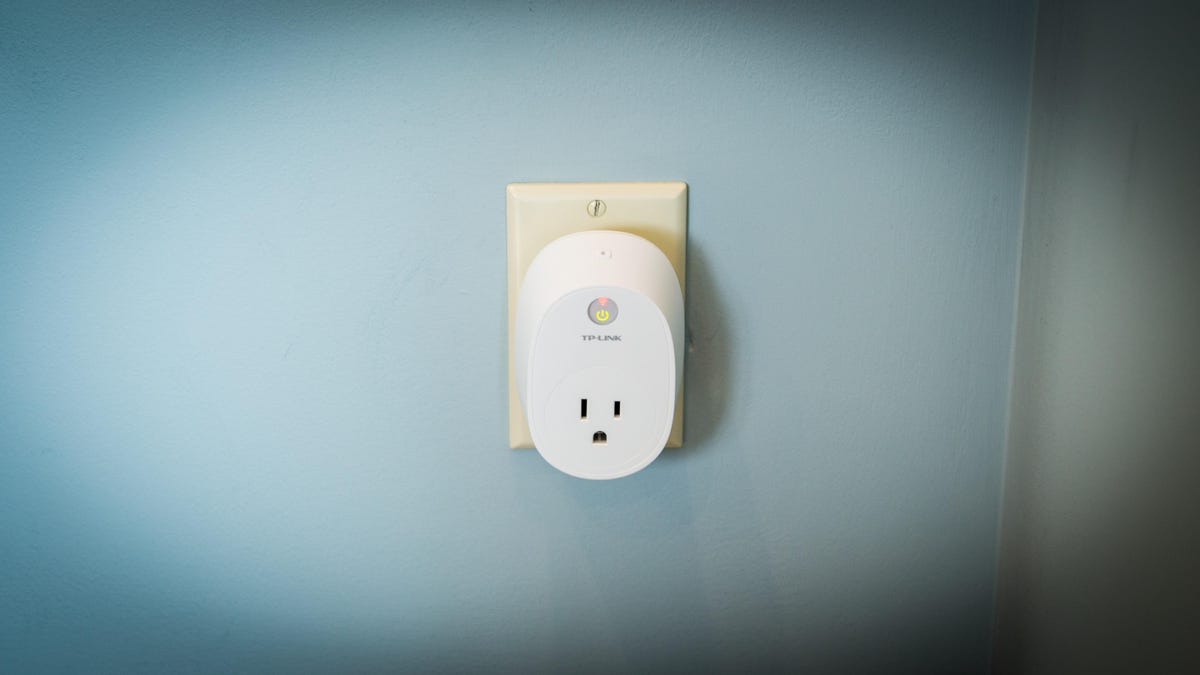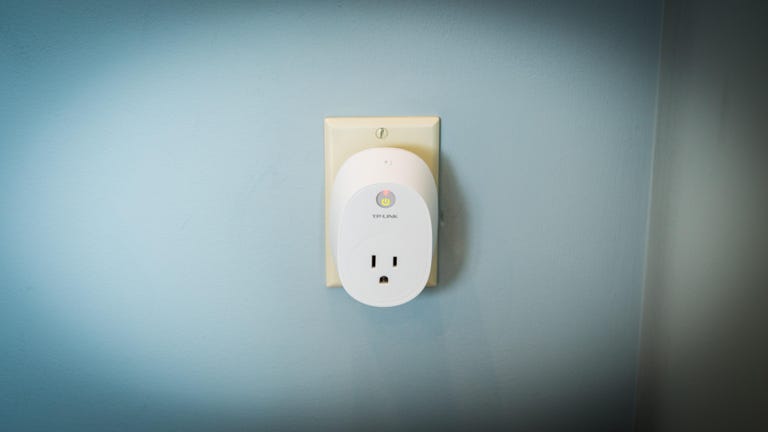 Why You Can Trust CNET
Why You Can Trust CNET Kasa Smart Wi-Fi Plug with Energy Monitoring review: Track your energy consumption with TP-Link's smartest plug
Monitor your device's energy consumption with this $30 smart plug that works with Google Assistant and Amazon Alexa.
Smart plugs are a great way to add automation to lamps, fans and other small appliances. While these connected plugs bring your dumb devices into the smart home , there are a handful that do even more than simply automate power. The $30 Kasa Smart Wi-Fi Plug from TP-Link handles Google Assistant and Amazon Alexa integration, as well as scheduling, away mode and energy monitoring. It's a capable smart plug with a great app, but the Kasa's size keeps it from making the top of my list.
The Good
The Bad
The Bottom Line
Read more: These smart plugs are the secret to a seamless smart home | Want to buy a smart plug? Read this first

The TP-Link Kasa Smart Wi-Fi Plug works well, but takes up a lot of space.
The Kasa Smart Wi-Fi Plug is similar in most ways to its mini counterpart, except when it comes to size and energy monitoring. While the mini fits well across a wall outlet without blocking the adjacent plug, the Wi-Fi Smart Plug isn't designed with space-saving in mind. The clunky, vertical shape blocks outlets above and below. It's hard to imagine the addition of energy monitoring warrants such a big device, but TP-Link isn't alone here. Two other energy-tracking smart plugs we've reviewed -- the Belkin Wemo Insight Switch and the Geeni Energi smart plug -- also block adjacent outlets with bulky design. Bloated housing aside, the TP-Link Wi-Fi Smart Plug offers reliable power with a 120V or 15A input and a max load output of 15A. That won't work for powering a large appliance like an oven, but it should be plenty for most small to medium household devices.
Setup
Setting it up the Kasa Smart Wi-Fi Plug is quick and easy. The entire process took me less than 10 minutes. Even if you've never set up a smart plug before, I can't imagine setup taking more than 15 minutes. Download the Kasa app for iOS or Android devices, and it displays step-by-step instructions for creating an account and connecting your smart plug to your existing 2.4GHz Wi-Fi connection. A green Wi-Fi icon on the smart plug illuminates when the connection is established. Within the app, you can customize the name, icon and location of the smart plug for easy referencing.
Once you've connected your smart plug to your Wi-Fi network, adding it to Google Home or Amazon Alexa is just a matter of linking accounts. For Google , you'll choose the Kasa brand from Google's list of smart-home devices and log into your Kasa account. Once you're logged in, Google will detect your smart plug. In the Amazon Alexa app, you'll need to enable the Kasa Home skill, log into your Kasa account, then prompt Alexa to discover devices. HomeKit users are out of luck here, since TP-Link's line of smart plugs aren't compatible with Apple's home automation platform.
The Kasa app
TP-Link's Kasa app is one of the nicest looking I've seen in my time testing smart plugs. It's clean, well-organized and uncluttered, even though it supports a wide range of TP-Link devices, including sensors, cameras and light bulbs . If you don't have any other TP-Link Kasa products, the app still feels streamlined and easy to navigate. When it comes to smart plug-specific features, TP-Link gives you plenty of options.
You'll be able to access your plug remotely and view the plug's status as well as energy consumption in kilowatt hours (kWh). TP-Link's energy monitoring isn't nearly as detailed as what you'll get from the Belkin Wemo Insight Switch, but it's a nice addition to the plug. It's worth noting that TP-Link does sell a lower-priced version of this plug without energy monitoring capability, but If I were going that route, I'd purchase the Kasa Mini for its space-saving design.
Scheduling is where TP-Link really hits its stride. There are more than a few ways to schedule your smart plug. You can create a daily schedule for on and off, including a specific time and repeating days of the week. You can also turn on Away Mode, and your smart plug will power on and off randomly to make it appear as though someone is home. This is a great feature for devices like lamps or TVs . A timer option allows you to set the plug to turn off after a specific amount of time, and there's another option for powering the plug on or off in sync with dawn and dusk, as determined by your home's location.
The Kasa app's Away Mode mimics an occupied home by turning your device on and off at random.
Voice commands with both Google Assistant and Amazon Alexa worked well in my testing. I was able to power the plug on and off with the nickname I gave it. You won't be able to use voice commands for any of the scheduling capabilities, though. One difference I did notice between Google Assistant and Amazon Alexa was the ability to check the plug's status. With Google Assistant, I could ask if the plug was on and Google would let me know. Amazon wasn't able to tell me the status of the plug. Outside of the Kasa app and Google or Alexa integration, TP-Link Kasa also offers an IFTTT (If This, Then That) service for automating devices with location, custom voice assistant phrases and other TP-Link products.
Should you buy it?
TP-Link's Kasa Wi-Fi Smart Plug performed well and is easy to use, but you'll need to be comfortable giving up access to your adjacent wall outlet. That's a common theme among energy monitoring smart plugs. This smart plug is a good performer, but for a deeper dive into power-consumption data, I'd recommend the Belkin Wemo Insight Switch. If you're looking for a space-saving smart plug and can sacrifice energy monitoring, I'd suggest TP-Link's Wi-Fi-Smart Plug Mini. If you need HomeKit compatibility, the iDevices Switch or PureGear PureSwitch are both solid options.


